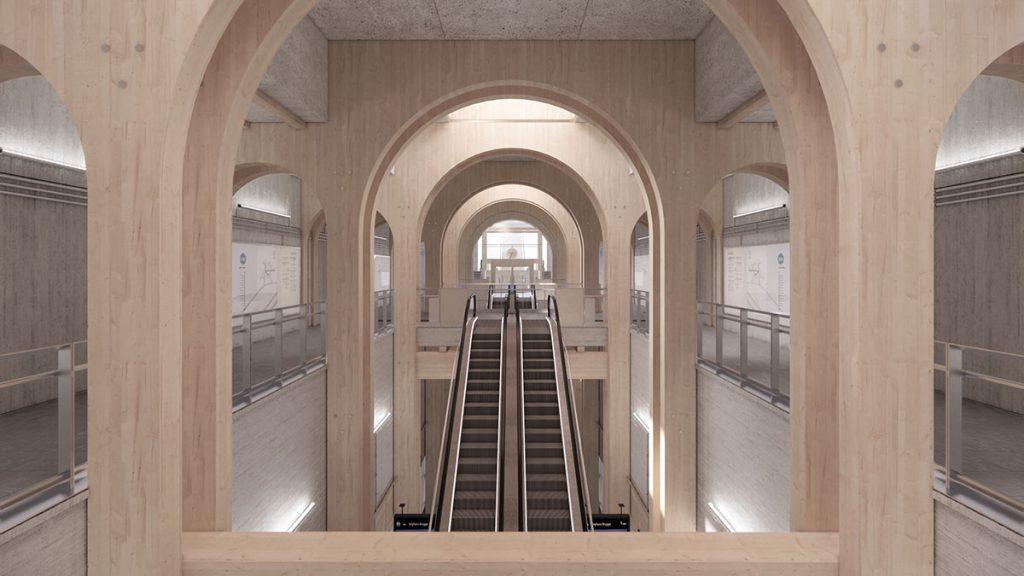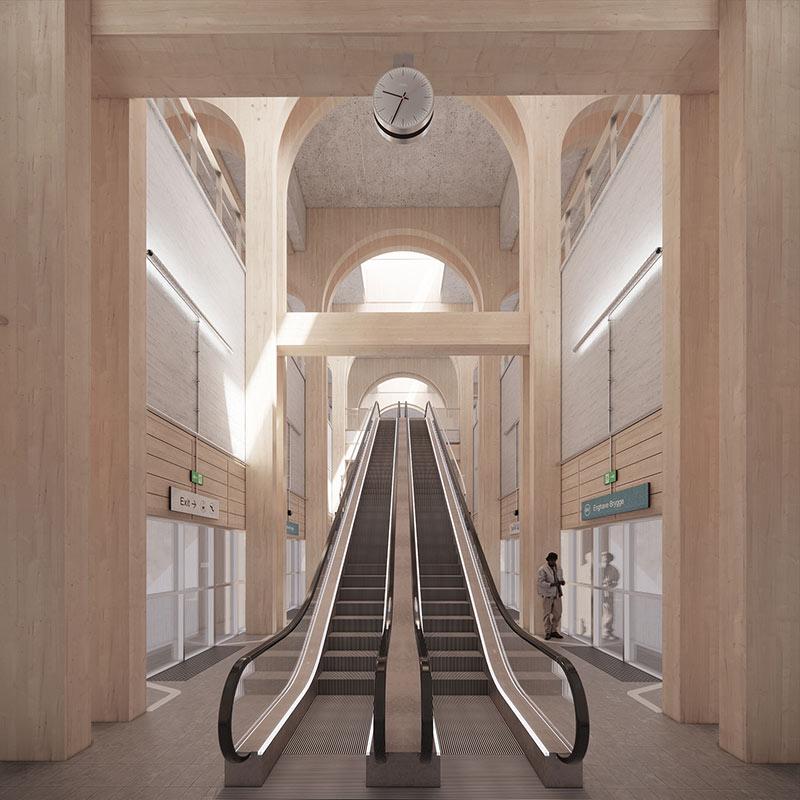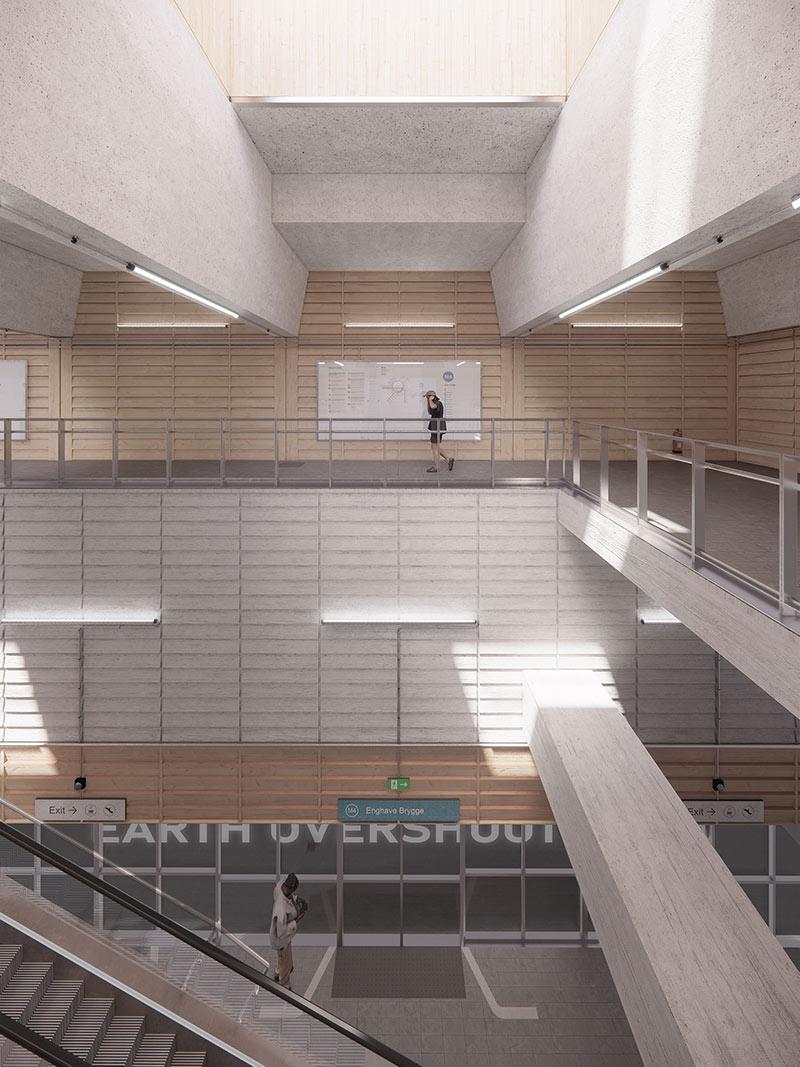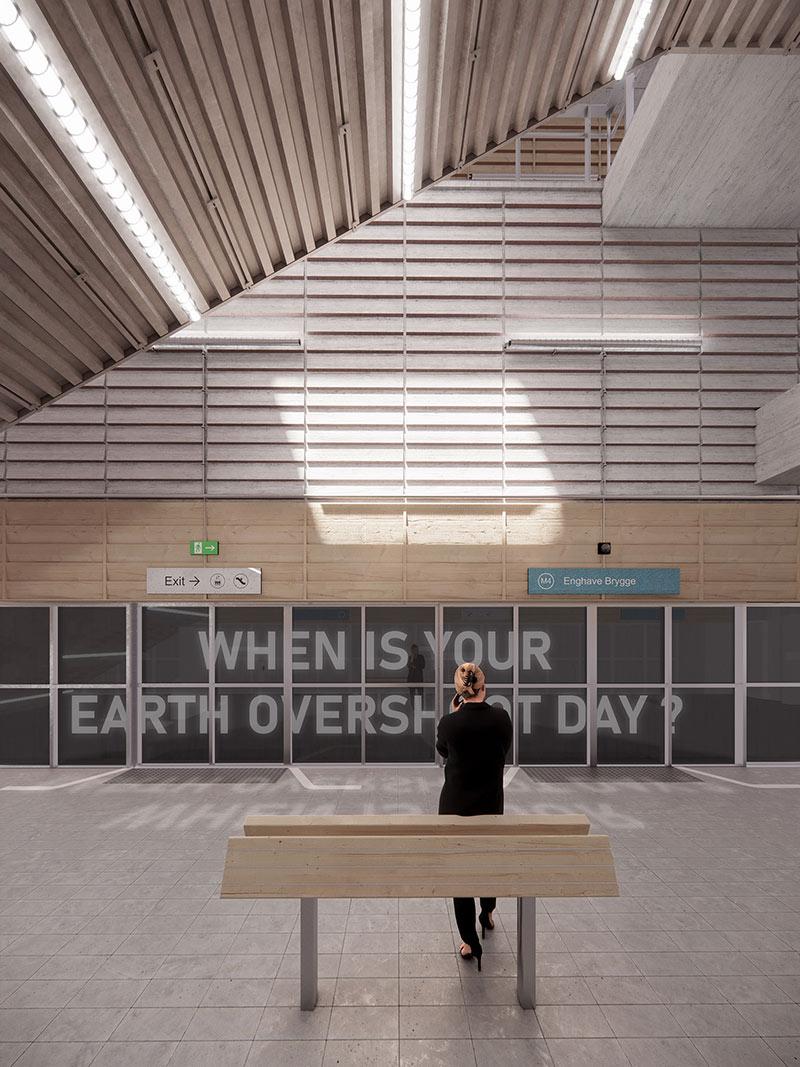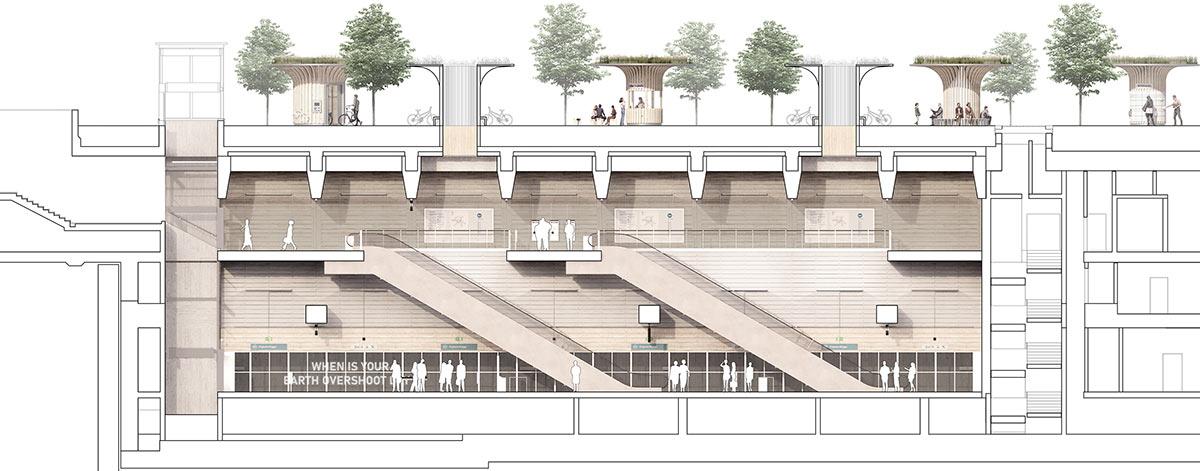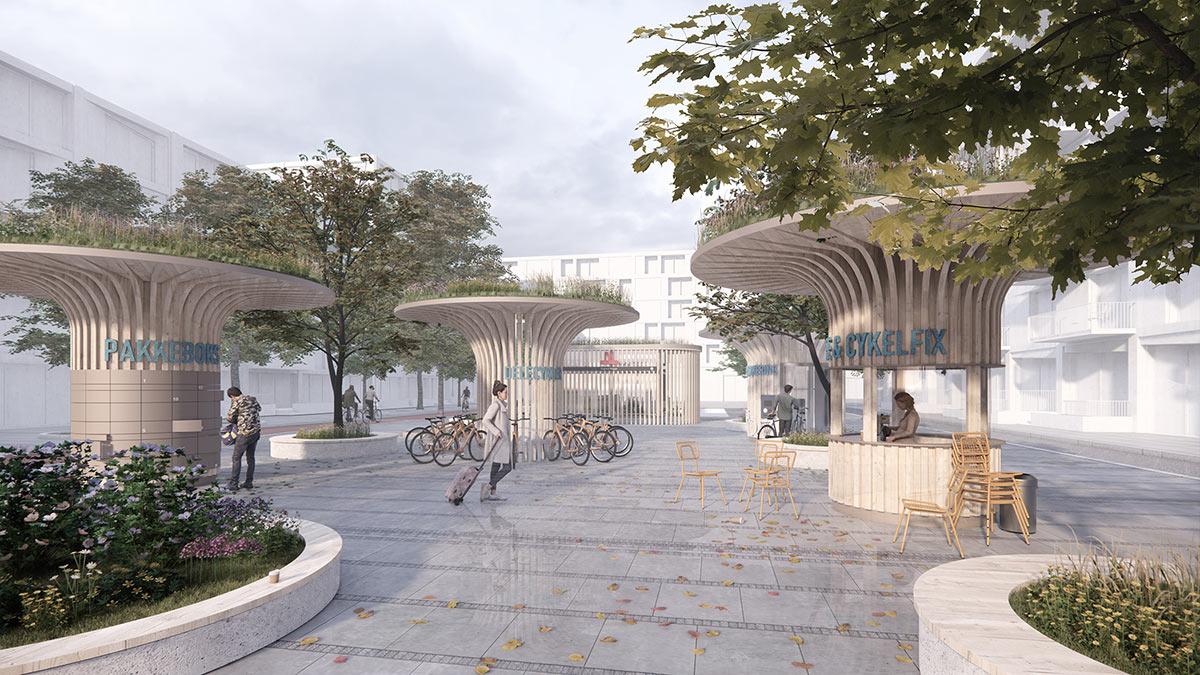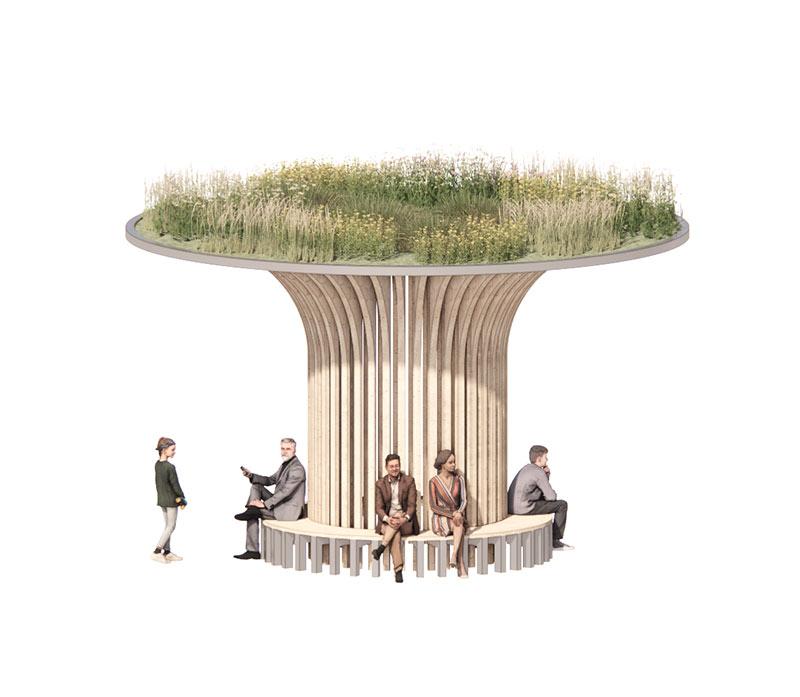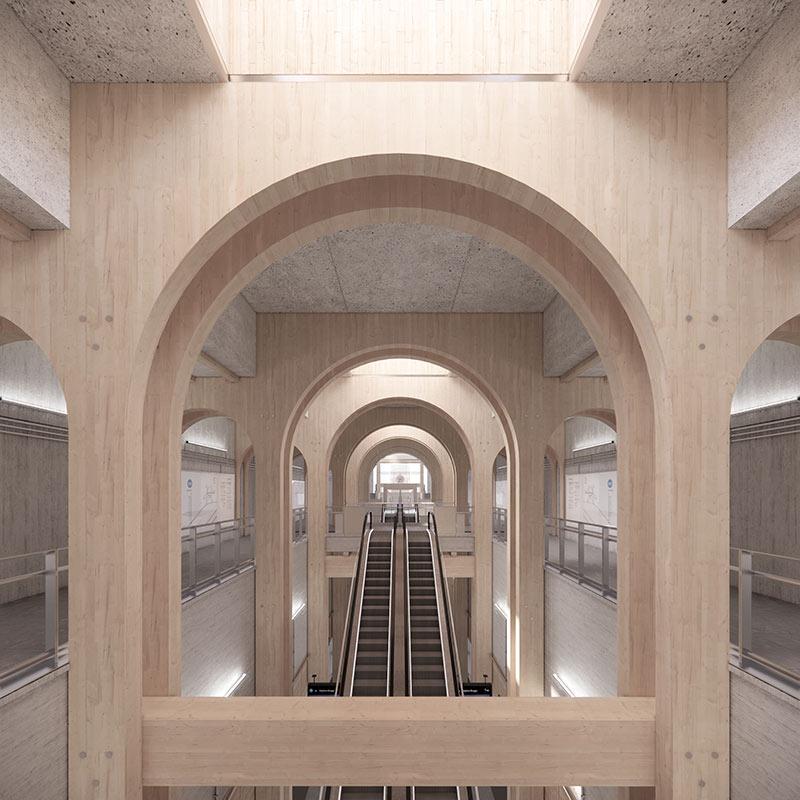A metro station built with timber
Although this design looks like a utopian dream, in Copenhagen it is set to become reality. Over the coming years, the Danish capital will be introducing timber-hybrid metro stations. The concept by JaJa Architects adopts a holistic approach and takes climate-friendly building below ground.
A few years ago, an announcement by the then Lord Mayor of Copenhagen Sophie Hæstorp Andersen made headlines around the world: The city is going to miss its ambitious target of becoming carbon neutral by 2025. That said, it will only just fall short, with merely two percent to go before it reaches climate neutrality. This is an astonishing achievement, attributable to a courageous transport policy and an early transition to renewable energies. Hardly any other city in the world is adopting climate-friendly mobility with such determination. In 2018, 68 percent of travel by the people in Copenhagen used public transport or bicycles, and this number is increasing all the time.
The city has a comprehensive mobility concept that is implemented consistently. Electric cars and scooters benefit from free parking in the city, as do hydrogen vehicles. In contrast, the parking fees for petrol and diesel cars are relatively high. The income resulting from these measures is invested in climate-friendly infrastructure such as the excellent network of bicycle routes that makes Copenhagen the world’s most bicycle-friendly city. In addition, the underground train network is being steadily expanded as part of new urban development areas.
Metro stations for the future
In order to make the infrastructure even greener and further reduce emissions, a competition to find the “metro stations of the future” was organized. The winners were local experts JaJa Architects. Their design shows a metro station that combines conventional reinforced concrete with structural timber design.
A visible structure in wood, supporting the station’s roof in combination with the concrete structures, is a choice with lower emissions and a radically architectural concept.
JaJa Architects, architecture firm
Solid columns and beams made of glued laminated timber dominate the look and feel of the design, and they are new to underground train stations. “A visible structure in wood, supporting the station’s roof in combination with the concrete structures, is a choice with lower emissions and a radically architectural concept,” the architects’ project description reads. “It is visionary but also based on realistic terms and principles.”
This architectural design combines contemporary simplicity with a nod to historical features. The timber arches are not just a design element that is currently enjoying a revival, they also revisit the early days of rail travel and their spacious station concourses. Retro elements such as an analogue station clock underline the slightly nostalgic character of the station architecture.
Less is more
On the one hand, the concept naturally aims to reduce emissions that pollute the environment by choosing specific materials. After all, wood is known to be a carbon sink that locks up CO2 over the long term. But on the other, this approach by JaJa Architects is based on functional reduction, true to the motto “less is more”. The architects explain: “Instead of placing a thin ‘green’ layer on concrete, we propose consistent material optimization that highlights the structure in wood, using, and reusing, biomaterials.”
Instead of placing a thin ‘green’ layer on concrete, we propose consistent material optimization that highlights the structure in wood, using, and reusing, biomaterials.
JaJa Architects, architecture firm
Their design envisages concrete and timber walls with the same structure. Timber moulding used for creating the shape of the concrete surface will subsequently become wall panelling. This optimizes the entire construction process, and also reduces waste.
Mushrooms above the metro
Apart from reducing material needs, these underground train stations are expected to become more than just places that transport people from A to B. The architects envisage the metro of the future as a mobility hub that offers new solutions for transportation in a sophisticated concept.
Above the metro stations, mushroom-shaped wooden pavilions are designed to encourage interaction and activity. These “M pavilions” – inspired by Copenhagen’s historic telephone kiosks – can accommodate cafés, parcel centres, shared bikes and cycle parking. This will enable them to help close the final gaps in the transport infrastructure, also referred to as the first and last mile problem. In other words, they will help people who use public transport to travel in comfort to and from their homes.
As climate-friendly strategies only really get off the ground if they are adopted by large sections of the population, future plans call for underground train stations to become places that make an increasing contribution towards raising climate awareness.
“Our concept not only focuses on reducing CO2 emissions but also seeks to connect the metro to the overall mobility strategy and engage the thousands of daily passengers,” the project description reads.
Cinema-sized screens, posters flanking escalators and also an app will share a common message for travellers: net zero is a goal that can only be achieved if we all pull together as a team.
Text: Gertraud Gerst
Translation: Rosemary Bridger-Lippe
Visualizations: JaJa Architects
